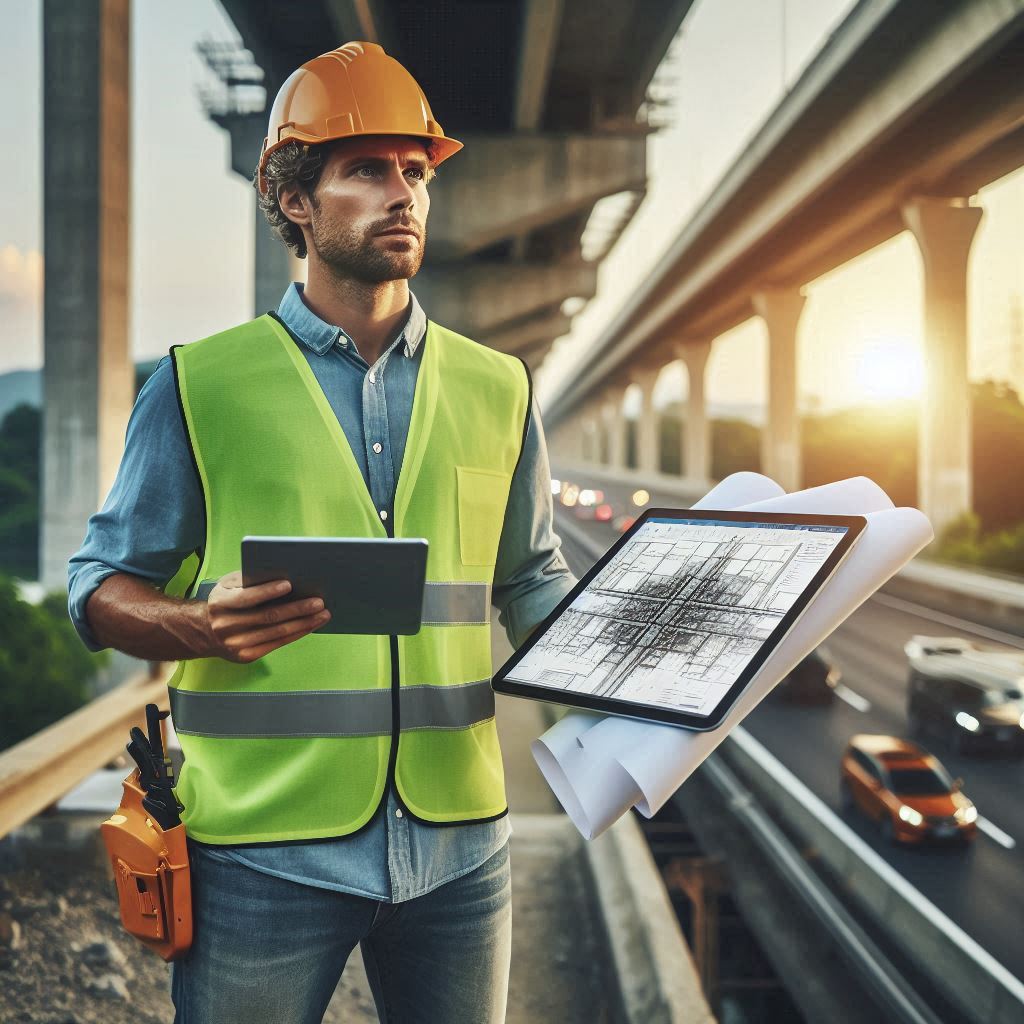Introduction
Transportation engineering focuses on designing, planning, and maintaining transportation systems.
It plays a crucial role in smart city development.
Smart cities use technology and data to enhance urban living.
Transportation engineering is vital in creating efficient, sustainable, and resilient urban environments.
Transportation engineering ensures the seamless movement of people and goods.
This efficiency is essential for smart cities.
By integrating advanced technologies, transportation engineering improves traffic flow and reduces congestion.
This leads to lower emissions and better air quality.
Smart city development relies on innovative transportation solutions.
These solutions include intelligent traffic management systems, smart public transportation, and eco-friendly infrastructure.
Transportation engineers design systems that adapt to real-time data.
This adaptability enhances the city’s responsiveness to changing conditions.
Sustainability is a key goal of smart cities.
Transportation engineering contributes significantly to this goal.
Engineers create infrastructure that supports electric vehicles and reduces reliance on fossil fuels.
They also promote cycling and walking through safe, accessible pathways.
Transportation engineering also enhances safety in smart cities.
Smart traffic lights, for example, adjust in real-time to improve traffic flow and reduce accidents.
Engineers use data analytics to identify high-risk areas and implement safety measures.
Public transportation is a cornerstone of smart cities.
Transportation engineers design and optimize public transit systems for efficiency and convenience.
These systems reduce the number of private vehicles on the road, lowering emissions and congestion.
Transportation engineering integrates with other smart city components.
For instance, smart grids and energy-efficient buildings complement sustainable transportation.
This holistic approach ensures a cohesive, sustainable urban environment.
Role of transportation engineering in reducing traffic congestion
How Transportation Engineers Can Design and Implement Strategies to Reduce Traffic Congestion in Cities
Transportation engineers play a critical role in reducing traffic congestion in cities.
They design and implement strategies that make urban transportation more efficient.
One effective strategy is traffic signal optimization.
By coordinating traffic lights, engineers can ensure a smoother flow of vehicles.
This reduces stop-and-go driving, which is a major cause of congestion.
Smart technologies offer powerful tools for traffic management.
Real-time traffic monitoring provides engineers with up-to-the-minute data on traffic conditions.
This data helps in making quick adjustments to traffic signals and rerouting traffic to less congested areas.
For instance, adaptive signal control technology adjusts the timing of red, yellow, and green lights based on current traffic.
This adaptability significantly reduces delays and congestion.
Use of smart technologies like traffic signal optimization and real-time traffic monitoring
Traffic signal optimization is a powerful tool for managing urban traffic.
Traditional traffic lights often operate on fixed schedules, which can lead to inefficiencies.
Traffic signal optimization adjusts the timing of red, yellow, and green lights based on real-time traffic conditions.
This means that lights can change in response to actual traffic volumes, rather than following a preset schedule.
Benefits of Reducing Traffic Congestion for Reducing Commute Times
Reducing congestion also leads to shorter commute times.
When traffic moves more efficiently, drivers spend less time stuck in traffic jams.
This boosts productivity as workers reach their destinations more promptly and reduces the stress associated with long commutes.
Shorter commutes enhance quality of life by allowing individuals more time for family, leisure, and personal activities.
Efficient transportation systems contribute to a better work-life balance and overall well-being.
In turn, this improves the attractiveness of the city as a place to live and work.
Read: Biomedical Engineering: Regulatory Affairs
Integration of public transportation systems in smart city development
The Importance of Integrating Different Modes of Public Transportation
Integrating different modes of public transportation is crucial for reducing traffic congestion.
Engineers must design systems that seamlessly connect buses, trains, and bike-sharing programs.
This integration ensures that users can easily switch from one mode of transport to another.
For example, placing bus stops near train stations makes transferring between buses and trains simple and convenient.
Bike-sharing programs offer a flexible option for short trips.
When these programs are integrated with public transit networks, they fill gaps in the transportation system.
Engineers can design dedicated bike lanes and parking stations at transit hubs to support this integration.
This encourages people to use bikes for the last mile of their journey, reducing the number of cars on the road.
Optimizing public transportation routes is a crucial task for transportation engineers aiming to enhance accessibility and convenience for city residents.
This process involves a multi-faceted approach that combines data analysis, community engagement, and innovative planning techniques.
How transportation engineers can optimize public transportation routes to improve accessibility and convenience for city residents
At the heart of route optimization is a deep understanding of the city’s transportation patterns and needs.
Engineers begin by collecting extensive data on current transit usage, traffic flow, and demographic information.
This data is analyzed to identify areas with high demand for public transportation and to understand the existing gaps in service.
By examining peak travel times, frequently visited destinations, and underserved neighborhoods, engineers can pinpoint where improvements are needed.
Community feedback is another essential component of the optimization process.
Engaging with residents through surveys, public meetings, and focus groups provides valuable insights into their transit experiences and preferences.
This feedback helps engineers understand the specific challenges faced by different groups, such as those with disabilities, the elderly, or low-income families.
Addressing these concerns ensures that public transportation routes are designed to be inclusive and meet the diverse needs of the population.
Role of smart technologies in improving the efficiency and reliability of public transportation systems
Smart technologies are revolutionizing public transportation systems, making them more efficient and reliable than ever before.
At the core of this transformation is the integration of advanced digital tools and data analytics, which enhance both the operational and user experience aspects of public transit.
One significant advancement is the use of real-time data.
Modern public transportation systems leverage GPS and IoT (Internet of Things) sensors to track vehicles in real-time.
This data is then used to provide accurate arrival times, which reduces waiting periods and improves passenger satisfaction.
For instance, apps that display real-time bus or train schedules help commuters plan their journeys more effectively, minimizing the frustration associated with unpredictable delays.
Read: Networking Tips for Biomedical Engineers
Designing pedestrian-friendly infrastructure
The importance of creating safe and accessible pedestrian infrastructure in smart cities
Creating safe and accessible pedestrian infrastructure is crucial for the development and success of smart cities.
As urban areas evolve into smart cities, the integration of advanced technologies and data-driven solutions transforms the way we approach urban planning and transportation.
However, amidst this technological evolution, the fundamental need for accessible and safe pedestrian pathways remains paramount.
How transportation engineers can design walkable streets, sidewalks, and pedestrian crossings to promote active transportation
Transportation engineers play a crucial role in designing walkable streets, sidewalks, and pedestrian crossings that encourage active transportation.
This task involves more than just creating functional pathways; it requires a holistic approach to urban planning that integrates safety, accessibility, and aesthetic appeal to foster a walking-friendly environment.
At the core of designing walkable streets is the creation of a network that seamlessly connects different destinations.
Engineers must carefully plan the layout of streets to ensure they are interconnected and provide convenient routes for pedestrians.
This includes considering factors like proximity to key destinations such as schools, parks, and commercial areas, which encourages people to walk rather than drive.
By creating a grid-like street pattern with frequent intersections, transportation engineers can reduce walking distances and make routes more intuitive.
Benefits of pedestrian-friendly infrastructure for improving public health, reducing traffic congestion, and enhancing urban aesthetics
Pedestrian-friendly infrastructure plays a vital role in transforming urban environments, bringing significant benefits to public health, traffic management, and urban aesthetics.
Firstly, the impact on public health is profound.
When cities prioritize pedestrian-friendly infrastructure, such as sidewalks, crosswalks, and pedestrian zones, they encourage walking and biking over driving.
This shift promotes physical activity, which is crucial for reducing the risk of chronic diseases such as obesity, heart disease, and diabetes.
A more walkable city encourages residents to integrate more movement into their daily routines, leading to overall better physical health.
Moreover, pedestrian-friendly environments often include green spaces and recreational areas, which contribute to mental well-being by providing spaces for relaxation and stress relief.
Read: Biomedical Engineer: Working in Healthcare Tech

Implementing sustainable transportation solutions
Role of transportation engineers in promoting sustainable transportation solutions like electric vehicles, bike lanes, and car-sharing programs
Transportation engineers play a crucial role in designing and implementing infrastructure that supports sustainable transportation options.
They are responsible for planning and designing transportation systems that reduce environmental impact and promote sustainable transportation modes.
By incorporating features such as electric vehicle charging stations, bike lanes, and car-sharing programs into the design of transportation networks, engineers can encourage the use of more sustainable modes of transportation.
How Smart technologies can be used to monitor and optimize the use of sustainable transportation options
Smart technologies have the potential to revolutionize the way we think about transportation.
By using sensors, data analytics, and real-time monitoring systems, transportation engineers can gather valuable information about the usage patterns of different modes of transportation.
This data can be used to optimize transportation networks, improve traffic flow, and reduce congestion.
For example, smart traffic lights can adjust their timing based on traffic conditions, reducing wait times for commuters and lowering emissions from idling vehicles.
Environmental and health benefits of sustainable transportation for reducing greenhouse gas emissions and promoting physical activity
Sustainable transportation options have numerous benefits for both the environment and public health.
By reducing our dependence on fossil fuels and promoting the use of cleaner transportation modes such as electric vehicles and bicycles, we can significantly reduce greenhouse gas emissions and improve air quality.
In addition, encouraging walking, cycling, and public transportation can promote physical activity and reduce the incidence of chronic diseases such as obesity and heart disease.
Overall, investing in sustainable transportation solutions is a win-win for both the planet and public health.
Read: Exploring Subfields of Aerospace Engineering
Incorporating smart technologies in transportation infrastructure
The use of smart technologies like sensor networks, Internet of Things (IoT), and artificial intelligence (AI) in optimizing transportation infrastructure
The integration of smart technologies such as sensor networks, the Internet of Things (IoT), and artificial intelligence (AI) is revolutionizing the optimization of transportation infrastructure.
These advancements are not merely enhancing the efficiency of transportation systems but are fundamentally transforming how they operate, making them smarter, more responsive, and more sustainable.
At the heart of this transformation is the use of sensor networks, which provide a comprehensive view of transportation infrastructure in real-time.
These sensors, embedded in roads, bridges, and vehicles, collect vast amounts of data about traffic conditions, vehicle performance, and environmental factors.
How transportation engineers can use data analytics to improve traffic flow, reduce emissions, and enhance safety on city roads
Transportation engineers are increasingly turning to data analytics to tackle the complex challenges of urban mobility.
By harnessing the power of data, they can significantly improve traffic flow, reduce emissions, and enhance safety on city roads.
One of the primary ways data analytics improves traffic flow is through real-time traffic management.
By analyzing data from various sources, such as traffic cameras, sensors embedded in roads, and GPS data from vehicles, engineers can monitor traffic conditions in real time.
This data enables them to adjust traffic signals dynamically to alleviate congestion, optimize traffic light timings, and reduce bottlenecks.
Transform Your Career Today
Unlock a personalized career strategy that drives real results. Get tailored advice and a roadmap designed just for you.
Start NowThe potential of smart technologies to revolutionize transportation systems and improve quality of life in cities
Smart technologies are reshaping transportation systems and dramatically improving the quality of life in cities.
By integrating advanced data analytics, artificial intelligence, and connectivity, these technologies are driving a transformation that goes beyond mere convenience.
At the heart of this revolution is the development of intelligent transportation systems (ITS).
These systems leverage real-time data from various sources, such as traffic sensors, GPS, and social media, to optimize traffic flow and enhance public safety.
For example, smart traffic lights can adapt to current traffic conditions, reducing congestion and minimizing travel times.
This responsiveness helps alleviate the daily gridlock that many urban residents face, making commutes more efficient and predictable.
Addressing equity and access in transportation planning
Importance of considering equity and access issues in transportation planning to ensure that all city residents have equal access to transportation options
Considering equity and access issues in transportation planning is crucial for creating inclusive and sustainable cities.
The core of transportation planning revolves around ensuring that all residents, regardless of their socioeconomic status, disability, or location within a city, have equal access to transportation options.
This consideration extends beyond simply providing transportation services; it involves a commitment to addressing the disparities that exist within urban environments.
How Transportation engineers can design inclusive transportation systems that serve diverse populations, including low-income communities and people with disabilities
Designing inclusive transportation systems is crucial for ensuring that all individuals, regardless of their economic status or physical abilities, can access essential services and participate fully in their communities.
Transportation engineers play a pivotal role in crafting these systems, employing a range of strategies to accommodate diverse populations, including low-income communities and people with disabilities.
To begin with, understanding the unique needs of diverse populations is essential.
Engineers must engage with these communities through surveys, focus groups, and community meetings to gather insights into their specific transportation challenges.
For low-income communities, the primary concerns often revolve around affordability and accessibility.
Engineers can address these issues by designing transportation systems that offer affordable fares, integrate with existing low-cost services, and include fare assistance programs.
Incorporating elements such as subsidized passes or free transfers can help alleviate financial burdens, ensuring that public transit remains a viable option for those with limited resources.
The social and economic benefits of promoting equitable access to transportation for improving mobility and reducing disparities in urban areas
Promoting equitable access to transportation in urban areas is pivotal for enhancing both social and economic outcomes.
It’s not just about providing physical mobility but about creating opportunities that foster inclusivity and economic stability.
When transportation systems are designed with equity in mind, they help bridge gaps between different socio-economic groups.
For instance, reliable public transit allows individuals from lower-income neighborhoods to access jobs, education, and healthcare services that might otherwise be out of reach.
This improved access can reduce unemployment rates and stimulate economic activity by enabling a more flexible and skilled workforce
Collaboration and Partnerships in Transportation Engineering for Smart City Development
Collaboration between transportation engineers, urban planners, policymakers, and community stakeholders is crucial for designing and implementing transportation solutions.
Building partnerships with public and private sectors is important to fund and support transportation projects for smart city development.
Successful case studies of collaborative efforts in transportation engineering can serve as models for smart city development initiatives.
Role of Collaboration
Transportation engineers work closely with urban planners to ensure that transportation systems are efficient and sustainable within a smart city framework.
Policymakers play a key role in shaping transportation policies that align with the goals of smart city development and sustainability initiatives.
Engaging community stakeholders in the transportation planning process ensures that their voices are heard and their needs are met in smart city projects.
Importance of Building Partnerships
Collaborating with the public sector allows transportation projects to leverage government resources and expertise in regulatory matters and infrastructure development.
Partnerships with the private sector enable transportation projects to access additional funding sources, expertise in technology integration, and innovation in solution implementation.
By forging partnerships with academia and research institutions, transportation engineering can benefit from cutting-edge research and best practices in smart city development.
Successful Case Studies
In Barcelona, Spain, collaboration between the city government, transportation engineers, and technology firms led to the implementation of a comprehensive smart city transportation system.
In Singapore, partnerships between the government, private sector, and academia have resulted in innovative transportation solutions like autonomous vehicles and smart traffic management systems.
The city of Portland, Oregon, has successfully integrated community input into transportation planning processes, resulting in sustainable transportation projects that prioritize equitable access for all residents.
Overall, collaboration and partnerships in transportation engineering are essential for the successful development of smart cities, where efficient and sustainable transportation systems play a critical role in enhancing quality of life and economic prosperity.
Conclusion
After discussing the role of transportation engineering in smart city development, it is clear that this field plays a crucial role in shaping the future of urban transportation systems.
By focusing on sustainable, efficient, and equitable solutions, transportation engineers can help create cities that are more livable and connected.
Transportation engineering has the potential to enhance mobility, reduce traffic congestion, and improve air quality in urban areas.
Through innovative technologies such as autonomous vehicles, smart traffic management systems, and integrated public transportation networks, transportation engineers can revolutionize the way people and goods move around cities.
It is essential to prioritize transportation engineering in urban planning to ensure that cities are well-equipped to handle the challenges of population growth and urbanization.
By investing in infrastructure projects that prioritize safety, accessibility, and environmental sustainability, cities can create a more resilient and inclusive transportation system for all residents.
Essentially, transportation engineering is a key component in the development of smart cities.
By implementing innovative solutions and embracing new technologies, transportation engineers can help create more sustainable, efficient, and equitable transportation systems that will benefit cities and their residents for years to come.




